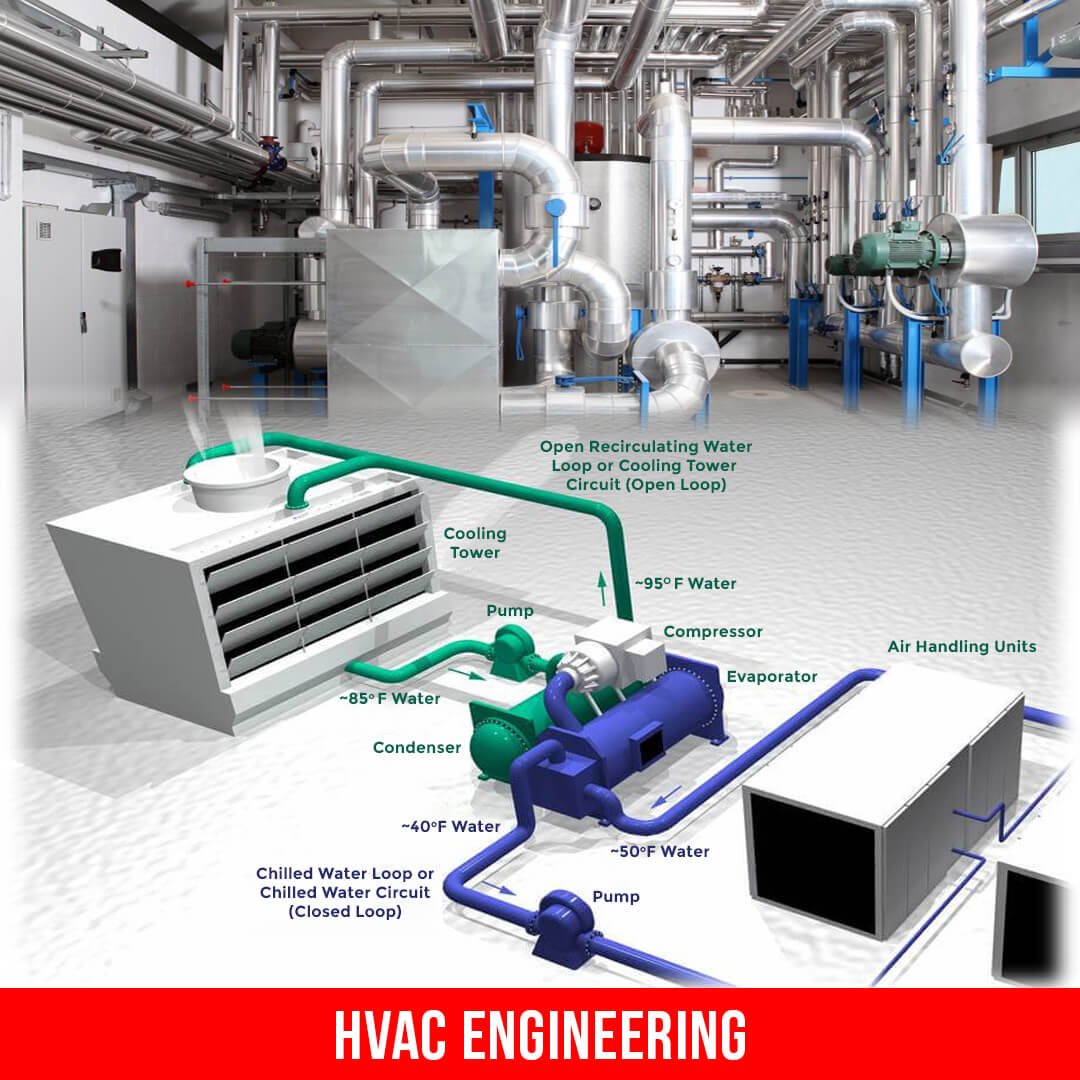
HVAC SYSTEM
Generally, HVAC stands for heating, ventilation, and air conditioning. This system supplies heating and cooling to residential and commercial buildings.
Create healthy and effective installation surroundings by providing power savings, function savings, and bear solutions that impact international ranking.
HVAC is an ordinary phrase that someone’s use, and most have a general opinion of what is HVA.
HVAC System Company
Damia Global Services Provides the easily understood by Heating, Ventilation, and Air Conditioning. HVAC system used for transferring air between indoor and outdoor regions, with heating and cooling both residential building and enterprises.
These systems keep you warm and comfortable in the winter and feel calm and refreshed in the summer and also filter and clean indoor atmosphere which has to maintain your healthy levels at comfort levels.

Classification of HVAC systems
The major classification of HVAC systems depends on addressing the primary equipment location to be centralized as conditioning the entire establishment as a whole unit or decentralized as separately conditioning a specific zone as part of an establishment. Therefore, the air and water allocation system should be created based on system category and the location of primary equipment. The criteria mentioned above should also be used in selecting between two systems.
Criteria Central system decentralized system Temperature, humidity, and space pressure necessities are:
- Capacity necessities Considering HVAC diversity factors to decrease the installed equipment capacity
- Effective first cost and operating cost
- Maximum capacity is needed for each piece of equipment
- Equipment sizing diversity is little
HVAC System Installation
Heating and Cooling System for Home
Some HVAC Systems cool with a unit called a condenser, a conventional air movement unit, others cool with a device called a heat pump. They both function similarly in that they hold warm air from inside and push it outside.
This is actually what reduces the indoor temperature, air conditioning does not blow cool air inside—it takes the warmer air away.
How does HVAC work?
Each element may be different, such as a brilliant system merged with window air conditioning units.
However, it is more common for integrated systems such as main heating and AC systems that use a blower to distribute air via interior vents in a residence, or with a ductless system for different spaces.
The three major functions of an HVAC system are interrelated, specifically when providing acceptable indoor air quality and thermal comfort.

Best HVAC contractors in India
The main goals of a Heating, Ventilation and Air-Conditioning (HVAC) system are more than just warming or cooling a space to help keep good indoor air quality through adequate ventilation with filtration and provide thermal comfort. Instead, HVAC system helps to improve indoor air quality and provide comfort for consumers. The selection and formatting of the HVAC system can influence many other high-performance plans, including water consumption (water-cooled air conditioning tools). While there are several various kinds of HVAC systems, they all start with the same requirement.
The HVAC system is the Backbone of Engineering, Procurement, and Construction in every field. It makes buildings, houses safer and healthier. These systems regulate temperature and humidity by fresh air. All HVAC systems and types such as the thermostat, heating unit, etc. are an important and integral part of a building and industry. HVAC systems play an important role in determining the temperature and quality of air. So you can not avoid faulty installation and It also controls and proper adjustments to the overall climate in the building whenever we want changes in outdoor temperature according to our comfort level. And It also provides the necessary cooling to keep the building comfortable.

Basic Components of HVAC
The basic components of an HVAC system that provides conditioned air to fulfill the thermal comfort of space and occupants and acquire the indoor air quality are :
- Mixed-air plenum and outdoor air management
- Air filter
- Supply fan
- Exhaust fans and an air outlet
- Outside air intake
- Chimneys
- Terminal instruments
- Return air technique
- Heating and cooling coils
- Self-contained heating or cooling division
- Cooling building
- Boiler
- Management(Control)
- Water Cooler
- Humidification and dehumidification tools